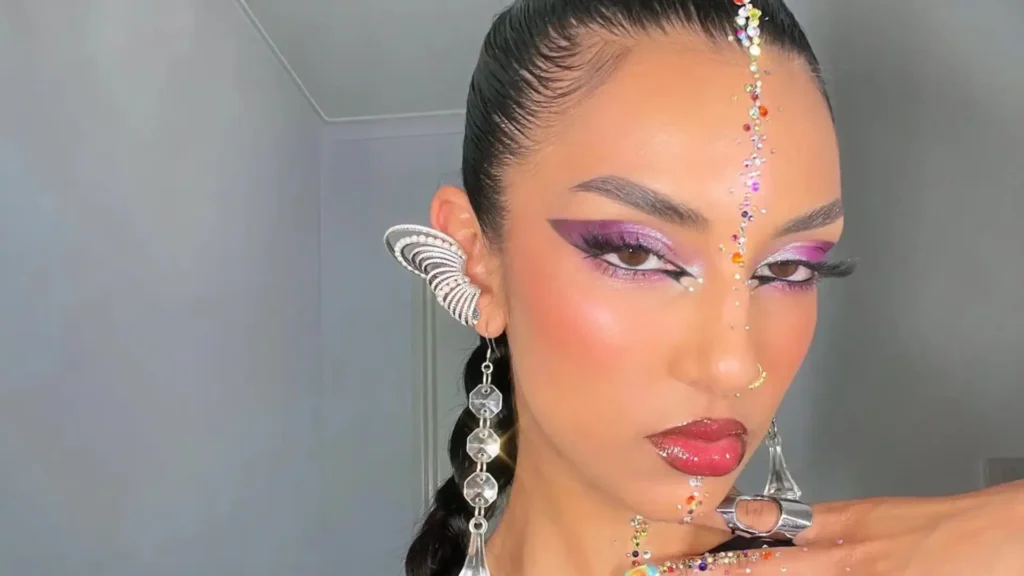Just when we thought we had a grip on trends like Y2K, the fashion-forward future is already upon us with something new: Y3K. Yes, you read that right. While many of us are still unpacking the tech-heavy, neon-glossy vibes of the Y2K aesthetic, the Y3K trend is quietly but steadily making waves. But what exactly is Y3K? Why does it sound so futuristic and, at the same time, oddly familiar? And how is it shaping the way we see culture, fashion, and technology?
In this article, we’ll take a deep dive into the Y3K trend, exploring its roots, its impact, and why it’s causing quite the stir. Buckle up—this ride might just take you a thousand years ahead of where we are today!
What is the Y3K Trend, Anyway?
If you’re wondering what Y3K stands for, let’s break it down. Just like its predecessor Y2K, which represented the year 2000, Y3K refers to the year 3000. The term signals a cultural shift, one that draws heavily from science fiction, cyber-futurism, and eco-consciousness. But it’s more than just a futuristic label—it’s a movement that speaks to humanity’s growing concerns about technology, the environment, and what the future holds for us.
Aesthetic Meets Existentialism
At its core, Y3K is both an aesthetic and a mindset. If Y2K was all about the fear of computers crashing and turning everything into chaos, Y3K represents the next evolution—where the digital and physical worlds blend seamlessly. But with that merging comes existential questions: Where are we headed? How will technology reshape our world, our bodies, and our daily lives? Will we still have a habitable planet by the time we hit 3000?
- Futuristic Elements: Y3K aesthetics often incorporate shiny, metallic materials, geometric patterns, and sleek, tech-inspired designs. Think of a world where people wear clothes that monitor their vitals and jewelry that’s 3D printed in minutes.
- Eco-Anxiety: The climate crisis plays a huge role in the Y3K mindset. It’s not just about fashion or gadgets—it’s about rethinking how we live sustainably while looking cool doing it. There’s a sense of urgency in the design choices, from renewable energy themes to recycled materials.
Not Just Fashion: A Multi-Dimensional Shift
Y3K isn’t just about clothes or futuristic accessories—it’s about the collective imagination of what our lives could look like in the year 3000. This trend touches on:
- Technology: Robotics, artificial intelligence, and virtual reality are at the heart of this trend. How will these technologies change everything, from the way we communicate to how we govern ourselves?
- Sustainability: The Y3K trend addresses environmental concerns head-on. It envisions cities that float above rising waters, renewable energy grids, and a circular economy where nothing goes to waste.
- Culture: Music, art, and even literature have started to adopt Y3K ideals. It’s about pushing the boundaries of creativity while acknowledging the precarious future we’re hurtling towards.
Why is the Y3K Trend Gaining Traction?
The Rise of Tech and Climate Awareness
@cinnagal This style/term really started blowing up in 2023 from what I can find!! What are your guys thoughts?? #harajuku #shibuya #japanesefashion #jfashion #altfashion #fashiontrends #y3k #y2k #fashionblogger ♬ Blade Runner 2049 – Synthwave Goose
It’s no coincidence that the Y3K trend has gained momentum in recent years. With the rapid growth of technology—AI, blockchain, quantum computing—people are starting to think more seriously about what the future holds. Will we be living on Mars? Will AI govern entire cities? These aren’t sci-fi fantasies anymore; they’re real possibilities that we could see in our lifetime.
At the same time, there’s an ever-growing awareness of our environmental footprint. Climate change has evolved from a distant concern to a front-and-center crisis. Rising sea levels, shrinking biodiversity, and more frequent natural disasters have sparked a new level of eco-consciousness. Enter Y3K, which imagines solutions to these problems through cutting-edge technology and sustainable living practices.
Fashion’s Love Affair with the Future
Fashion, always on the pulse of societal shifts, has fully embraced Y3K. Major designers are experimenting with futuristic fabrics—think smart textiles that can change color based on the weather or biodegradable materials that return to nature after use. Virtual fashion is also a huge part of this trend. Why buy a physical outfit when you can have a digital one created for your social media avatar?
Beyond high fashion, streetwear brands are incorporating elements of Y3K into their designs. Think oversized metallic jackets, holographic prints, and accessories that look like they belong in a space colony.
Nostalgia and Future Shock Collide
Strangely enough, the rise of Y3K comes with a dose of nostalgia for older “futuristic” trends like cyberpunk and 90s tech. There’s an odd comfort in revisiting those early internet aesthetics (glitch art, vaporwave) while also anticipating the wild innovations that will take us into the next millennium. We’re living in an era where future shock and past nostalgia seem to coexist.
The Cultural Impact of Y3K
How Y3K is Reshaping Art and Media
Art and media have always been reflections of society’s hopes and fears, and Y3K is no exception. In recent years, we’ve seen an explosion of Y3K-inspired art—from digital artworks featuring AI-generated landscapes to immersive VR experiences that simulate life in the year 3000. Filmmakers are also beginning to explore Y3K narratives, focusing on humanity’s relationship with technology, nature, and space travel.
Popular video games like Cyberpunk 2077 and Horizon Zero Dawn have already introduced futuristic worlds that align with the Y3K aesthetic. These games explore the tension between high-tech advancements and environmental collapse, a theme central to the Y3K movement.
A New Way of Thinking About the Future
Y3K is more than just a fashion trend or art movement—it’s an evolving mindset. As we look ahead, we’re forced to consider how technology and climate change will shape our lives. Will we live in a utopia where AI has solved all our problems? Or will we face dystopian consequences due to unchecked environmental destruction? Y3K reflects these anxieties, offering both a hopeful and cautious glimpse of what could come next.
FAQs
Q: Is Y3K just another passing trend?
A: While it may seem like a niche movement now,Y3K taps into broader concerns about technology and climate change. Its staying power will depend on how these issues evolve in the coming years.
Q: How does Y3K differ from Y2K?
A: Y2K was more focused on the turn of the millennium and the fears surrounding potential computer failures. Y3K, on the other hand, looks much further into the future, envisioning a world shaped by advanced technology and the need for sustainable living.
Q: Can I incorporate Y3K into my everyday life?
A: Absolutely! You can start by making eco-conscious choices, exploring futuristic fashion styles, or even experimenting with smart home technology. The trend is as much about mindset as it is about aesthetics.
Conclusion
The Y3K trend might sound like something straight out of a sci-fi novel, but it’s rooted in very real concerns about our future. As technology advances at a breakneck pace and environmental challenges grow more pressing, Y3K offers both an aesthetic and a philosophy that anticipates the future while addressing the problems of today.
In many ways, Y3K is about hope—hope that we can use our growing technological capabilities to create a sustainable, equitable, and innovative future. But it also serves as a reminder of the challenges we must confront if we’re to survive, let alone thrive, in the year 3000.
Key Takeaway:
The Y3K trend isn’t just about flashy futuristic styles or tech-heavy aesthetics. It’s a cultural shift that highlights our anxieties about the future, while also pushing us to imagine new possibilities—through fashion, technology, and sustainability—that could define the next millennium.
Discover more trends:
- weighted blanket Work? Uncover the Benefits for Anxiety and Better Sleep
- lesbian sex: How Do Lesbians Have Sex? 28 Essential Tips for Your First-Time Experience
- Mullein Tea: Benefits, Side Effects, and How to Brew This Traditional Herbal Tea
- Sex Addiction: Causes, Symptoms, and Treatment Options
- Watch Out For The Early Signs Of Rheumatoid Arthritis
- Follow us on Facebook
- Follow us on Pinterest





